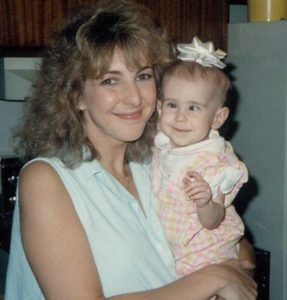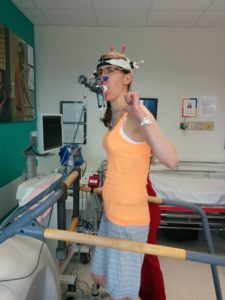 Photo Credit: Allyson Gray Photography
Photo Credit: Allyson Gray PhotographyIt took ten weeks and her mother’s persistence for Lauren Bednarz to be diagnosed with Tricuspid Atresia. Since her diagnosis in 1987, Lauren’s life has not been easy. However, she has chosen to live her life to the fullest to inspire others to do the same. “I love being able to offer hope, insight and knowledge by sharing my life journey with CHD with others,” Lauren said.
Lauren has endured many health challenges throughout her journey with congenital heart disease (CHD) but is now 31 and thriving. She has never let her condition get in her way. She graduated college, got married, and hopes to have a child in the near future! “Life with complex CHD is not always easy, but I cherish each day I’m given, live life to the fullest I can, and laugh often,” she said.
“I didn’t know how sick I really was as a young child. I was in the first generation of Fontan patients to make it to adulthood, until I was told by my parents and doctors.”

Lauren has been involved in the CHD community for many years. However, it wasn’t until adulthood she realized how inspiring her story really was. “I didn’t know how sick I really was as a young child. I was in the first generation of Fontan patients to make it to adulthood until I was told by my parents and doctors,” Lauren said. Ever since she has been an advocate for those with CHD. Through social media, Lauren is raising awareness and giving advice and hope to heart families. You can learn more about Lauren here:
Instagram: @laurenb_hopefulheart
Facebook: Lauren B-Adult CHDer/Fontaner with Tricuspid Atresia, HRHS
And her blog
If Lauren had been born less than 20 years earlier, she would have likely died in infancy due to her Tricuspid Atresia. It’s a miracle she survived ten weeks without intervention. The Fontan, the surgery that ultimately saved her life, was still in early experiemental stages then. “Continued CHD research is important to me. I’d live to 80 or even 100, but I also want all CHDers to be able to live long full lives with less worries and less medical struggles. My great hope is that through continued CHD research, some type of permanent fix or even a cure is found, even if it’s not in my lifetime. Supporting amazing CHD organizations like Project Heart is what will help make more CHD breakthroughs happen,” Lauren said. Research is the key to finding a cure to defeating CHD once and for all.
Thank you Lauren for sharing your story. My daughter was also born hypoplastic right ventricle but with pulmonary atresia. Knowing you are living a wonderful life into your 30’s brings me much needed hope for her in the future.
Thanks for sharing. My daughter has HypoPlastic Left Heart, she’s 17 now. I always like to hear and see adults with these conditions, it’s very hopeful. Good luck to you with having a baby one day!